Ethernet & Token Ring Network Assignment
advertisement
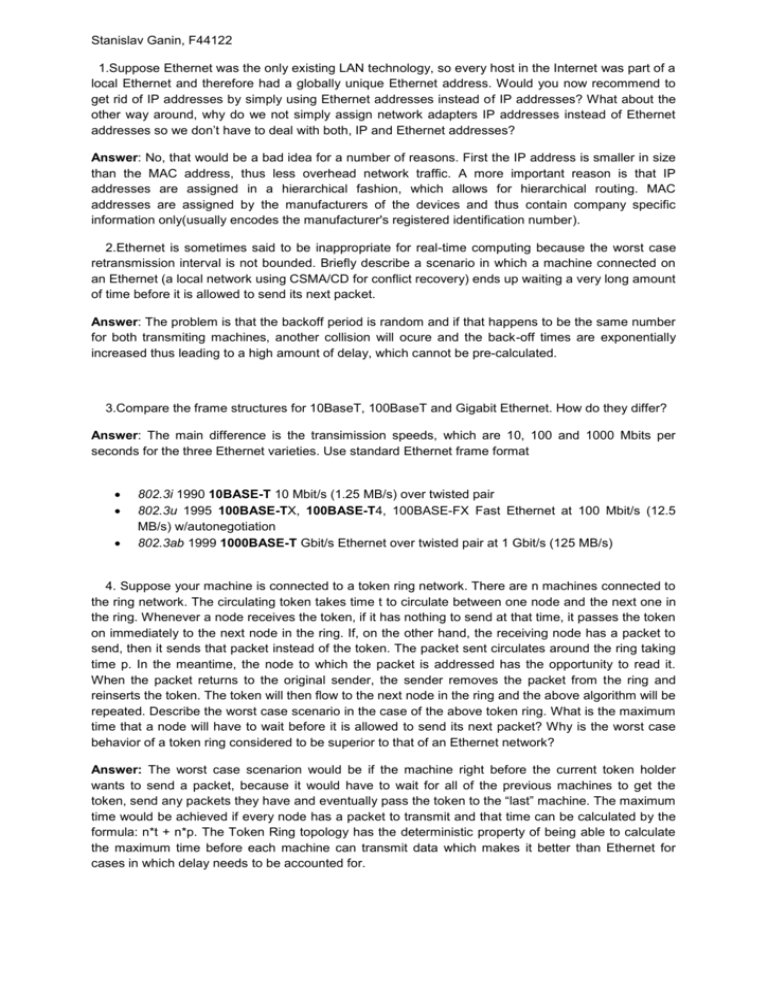
Stanislav Ganin, F44122 1.Suppose Ethernet was the only existing LAN technology, so every host in the Internet was part of a local Ethernet and therefore had a globally unique Ethernet address. Would you now recommend to get rid of IP addresses by simply using Ethernet addresses instead of IP addresses? What about the other way around, why do we not simply assign network adapters IP addresses instead of Ethernet addresses so we don’t have to deal with both, IP and Ethernet addresses? Answer: No, that would be a bad idea for a number of reasons. First the IP address is smaller in size than the MAC address, thus less overhead network traffic. A more important reason is that IP addresses are assigned in a hierarchical fashion, which allows for hierarchical routing. MAC addresses are assigned by the manufacturers of the devices and thus contain company specific information only(usually encodes the manufacturer's registered identification number). 2.Ethernet is sometimes said to be inappropriate for real-time computing because the worst case retransmission interval is not bounded. Briefly describe a scenario in which a machine connected on an Ethernet (a local network using CSMA/CD for conflict recovery) ends up waiting a very long amount of time before it is allowed to send its next packet. Answer: The problem is that the backoff period is random and if that happens to be the same number for both transmiting machines, another collision will ocure and the back-off times are exponentially increased thus leading to a high amount of delay, which cannot be pre-calculated. 3.Compare the frame structures for 10BaseT, 100BaseT and Gigabit Ethernet. How do they differ? Answer: The main difference is the transimission speeds, which are 10, 100 and 1000 Mbits per seconds for the three Ethernet varieties. Use standard Ethernet frame format 802.3i 1990 10BASE-T 10 Mbit/s (1.25 MB/s) over twisted pair 802.3u 1995 100BASE-TX, 100BASE-T4, 100BASE-FX Fast Ethernet at 100 Mbit/s (12.5 MB/s) w/autonegotiation 802.3ab 1999 1000BASE-T Gbit/s Ethernet over twisted pair at 1 Gbit/s (125 MB/s) 4. Suppose your machine is connected to a token ring network. There are n machines connected to the ring network. The circulating token takes time t to circulate between one node and the next one in the ring. Whenever a node receives the token, if it has nothing to send at that time, it passes the token on immediately to the next node in the ring. If, on the other hand, the receiving node has a packet to send, then it sends that packet instead of the token. The packet sent circulates around the ring taking time p. In the meantime, the node to which the packet is addressed has the opportunity to read it. When the packet returns to the original sender, the sender removes the packet from the ring and reinserts the token. The token will then flow to the next node in the ring and the above algorithm will be repeated. Describe the worst case scenario in the case of the above token ring. What is the maximum time that a node will have to wait before it is allowed to send its next packet? Why is the worst case behavior of a token ring considered to be superior to that of an Ethernet network? Answer: The worst case scenarion would be if the machine right before the current token holder wants to send a packet, because it would have to wait for all of the previous machines to get the token, send any packets they have and eventually pass the token to the “last” machine. The maximum time would be achieved if every node has a packet to transmit and that time can be calculated by the formula: n*t + n*p. The Token Ring topology has the deterministic property of being able to calculate the maximum time before each machine can transmit data which makes it better than Ethernet for cases in which delay needs to be accounted for.
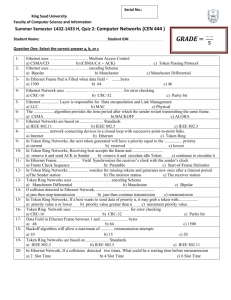

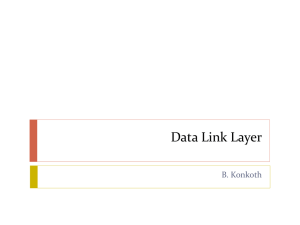
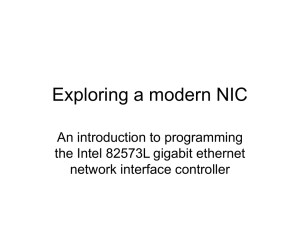

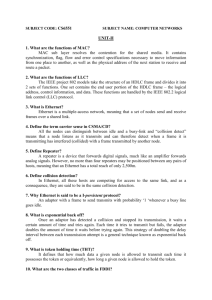


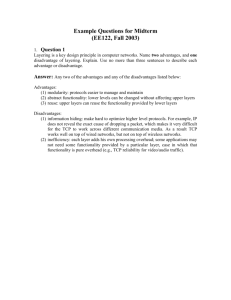
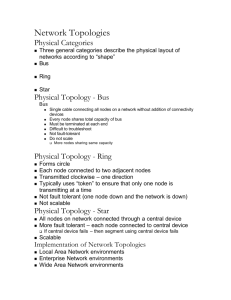
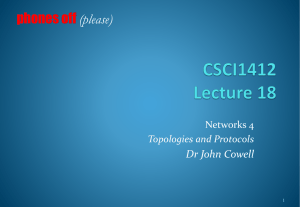
![MCS 1353 & MCS 0253 [12]](http://s2.studylib.net/store/data/009897203_1-434cebd0013e668200dda0a8a1da20da-300x300.png)